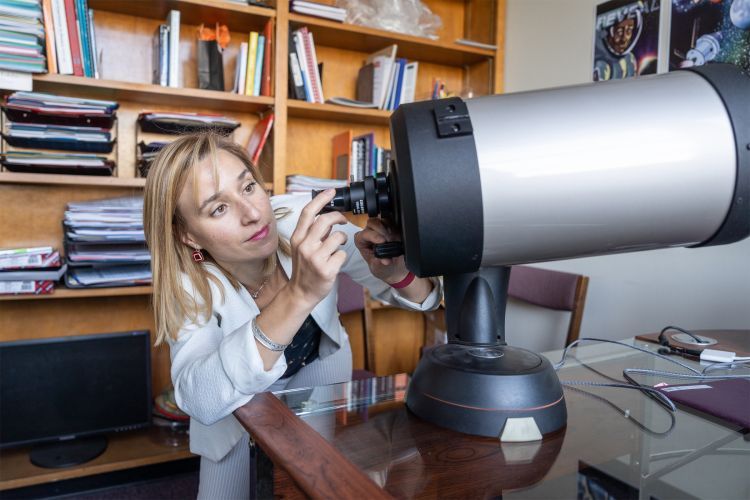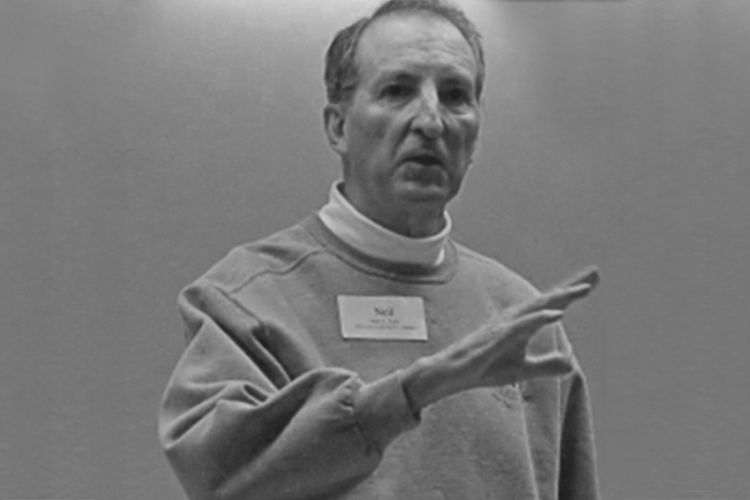Breadcrumb
Physics professor’s discovery sheds light on dark matter

Elisa Toloba
While studying the Virgo Cluster, a large grouping of galaxies near the Milky Way, Elisa Toloba made a discovery so unexpected, she initially thought it had to be wrong.
“What we discovered is that half of the ultra-diffuse galaxies in the Virgo Cluster have a ridiculously huge amount of dark matter, and with the physics we know, we cannot explain it,” said Toloba, associate professor of physics and astronomy and department chair.
Additional analysis confirmed the finding and her research is now published in The Astrophysical Journal.
The discovery is part of Toloba’s ongoing research into galaxy formation and evolution, which is helping to answer some of the most fundamental mysteries of the universe—where did we come from and where are we going?
She received a three-year, $500,000 grant from the National Science Foundation in the fall of 2022 to further her work along with a collaborator from UC Santa Cruz.
Right now, Toloba is focused on better understanding the large presence of dark matter she recently discovered and its importance in galaxy formation. Dark matter, which makes up most of the matter in the universe, is one of the biggest unknowns in physics.
“This is a completely new avenue that we are going to continue exploring,” Toloba said. “There are many things that could be happening. Because we are using only the physics that we know, we may be misinterpreting the data, or there may be other factors that we have never seen in other galaxies acting here that we are not taking into account.”
Toloba is exploring two other research areas as part of her grant: smaller galaxies, which appear to be the building blocks for larger galaxies, and why galaxies that formed around the same time look so different from each other.
“Galaxies that are alone or nearly alone, like our own, look blue. That means their stars are young and they are forming new stars. Galaxies that live together, hundreds and thousands of galaxies, they look red, which means their stars are old. So where they live must be an important piece of how they are evolving,” Toloba said.
Toloba conducts her observations remotely using two of the world’s largest and most advanced telescopes at the Keck Observatory, located on the summit of Mauna Kea in Hawaii. Her work there also includes participation in the observatory’s Shadow an Astronomer program, in which the public can see astronomers’ work in action and ask questions.
University of the Pacific students have an even closer view, getting the unique opportunity to participate in cutting-edge astrophysics research that cannot be found in a textbook.
Recent graduate Joseph Kruse ’23, who double majored in physics and piano performance, worked with Toloba for nearly a year from June 2022 to May 2023.
“What’s nice is that it’s very independent. She gave me some of the data she collected from the Keck Observatory and would give me weekly tasks,” Kruse said. “She gave me space to be my own thinker, and then if I needed guidance, she was there to talk me through it.”
Undergraduate research, which can be hard to come by at large research universities, is vital for students who want to pursue advanced degrees.
“When our undergrads apply to grad school, they get into the very best schools, and it is thanks to this real research they can do,” Toloba said.
Toloba is also part of a team of international scientists who discovered a missing link in galaxy formation. Their findings were recently published in the scientific journal “Nature.”
Several other University of the Pacific physics and astronomy professors are involved in high-profile research projects. Assistant Professor of Physics and Astronomy Dustin Madison is part of a team of international scientists that recently released breakthrough findings on gravitational waves, Associate Professor of Physics and Astronomy Guillermo Barro is among the first scientists selected by NASA to study images and data from the powerful James Webb Space Telescope and Associate Professor of Physics Daniel Jontof-Hutter recently coauthored a new catalog of exoplanets, which includes planets previously unknown to astronomers.





